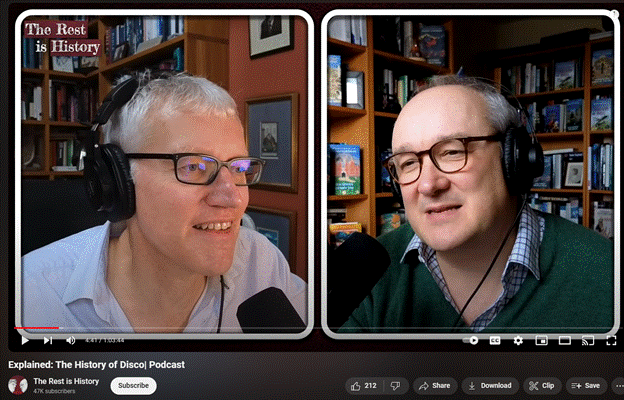
Lots of online shops have promo codes that can be entered as part of the checkout process, to get a discount, free shipping or similar. Sign up to their newsletter and get 5% off your first/next order, they might say. It’s usually a reward for or enticement to repeat custom, or if you believe in more sinister motives, a ploy to get you to hand over your data and expose your very living soul.
Use one of the many “coupon lookup” sites and you could easily find codes that can save significant amounts of money, especially if you’re buying expensive stuff. To the end user, it looks like free money but there’s a deeper and darker subtext. As we’ll learn, there’s never really such a thing as free money.

Don’t click the bottom one…
Sites like Coupert, Vouchercodes and more sometimes tell you what special offer codes are currently active; be wary of any which offer to “automatically apply all codes” or you’ll end up installing a browser extension, which you almost certainly don’t want to do.
1st party coupons

Microsoft has shoehorned “shopping” into Edge (similar to what Google does with Chrome, though Edge’s is a bit more internationally inclusive and somewhat easier to use), and has a Bing shopping site that’s similar to Google Shopping too.

If the feature is enabled in Edge, you’ll see a little shopping label icon in the address bar when you’re browsing something that the browser might have more insights on, and possibly be able to keep a track on the price too.
Both browser tools are convenient way to find coupons and codes, alongside price comparisons, price history etc, even if you could probably find keener deals and info by looking around yourself.

For vouchers and deals, the browser is basically scraping other sites which purport to offer them, though anyone who has tried such sites previously will probably find out many of the codes don’t work anymore.
Margins to share
Retailers typically have a high markup on stuff they sell, expressed often as a margin – if a clothing outlet sells a shirt for $100 and they are buying it from their supplier at $40, then they have a 60% gross margin. That seems a lot relative to the cost of the actual goods, but then the retailer has to run premises, pay staff, deal with returns and annoying customers – all of which will eat into that margin and give them a much lower %age of profit. So far, so good.
When dealing with online transactions, especially if the delivery cost is charged additionally, the overheads will be a lot lower and therefore the margin could afford to be less – that’s why many online-only retailers can sell the same things at a lower price than you’d find in the shops. But at least in trad. retail, customers might be browsing – they could be wandering through a mall and decide to drop in to a store and end up seeing something they didn’t know they wanted. In online retail, that’s so much less likely, therefore they try to attract buyers in other ways.
Online retailers find it sometimes helps to share the margin they make; hence the deals with cashback sites or credit cards, and by issuing voucher codes to incentivise customers to buy now while the deal is there. They may also have referral codes or links that give a small discount to the end purchaser and a kickback to the referring source as well.
Influencers and other “content creators” can earn money by talking about stuff and linking to places where you can buy it, potentially earning $thousands for driving extra buyers into the waiting arms of the online sellers. Sometimes they’ll have a voucher code that gets money off (and which the retailer can track so they know how much extra business is coming from that source). Sometimes the code is built into links on the blog or website, that when you click through (and subsequently buy), will share some margin back to the referrer.

Honey: The sweetest deal?

Along with the features browsers have built-in, there are loads of addins which can be used to help the shopping experience. Honey was a pioneer, so much so that PayPal shelled out a cool $4B a few year back.

Recent investigations have shown Honey’s business model to be on thin ice, though – ostensibly telling users that they can find the best deals with Honey, while getting retailers to pay them to offer only a limited set of the deals which might otherwise exist… so instead of Honey telling you of a sweet 10% deal you could get, they might be taking 2% off the retailer and showing you a 5% code.
Addins like Honey also sometimes pay to have their offering promoted – including paying money to influencers to have the Honey extension featured. To the chagrin of some – even leading to legal action – it appears that Honey has also been rewriting the referral links from other sites too.

So, Honey pays Spongebob Influencerpants to say nice things about them and feature on his site; all Sponge’s users run off and install Honey and are happy they’re getting something for little effort.
Later, when a user clicks on a link to buy some tat in the description text of Spongy’s latest video, instead of him getting the kickback from the retailer, the Honey addin is intercepting and rewriting the URL and pocketing the referral fee for itself.
Even if you think most influencers are gopping eejits, do check out Marques Brownlee – who is one of the smartest and most balanced of the oeuvre – and see what he says about the “Honey Scam”. Unsurprisingly, he recommends uninstalling the Honey addin with all speed.
Whatever the reality of this situation is, it’s certainly not cricket.


















![clip_image002[6] clip_image002[6]](/wp-content/uploads/2022/08/clip_image0026_thumb.jpg)
![clip_image004[4] clip_image004[4]](/wp-content/uploads/2022/08/clip_image0044_thumb-1.gif)
![clip_image006[4] clip_image006[4]](/wp-content/uploads/2022/08/clip_image0064_thumb-1.gif)
![clip_image008[4] clip_image008[4]](/wp-content/uploads/2022/08/clip_image0084_thumb-1.gif)
![clip_image010[4] clip_image010[4]](/wp-content/uploads/2022/08/clip_image0104_thumb-1.gif)
![clip_image012[4] clip_image012[4]](/wp-content/uploads/2022/08/clip_image0124_thumb-1.gif)
![clip_image014[4] clip_image014[4]](/wp-content/uploads/2022/08/clip_image0144_thumb.gif)


